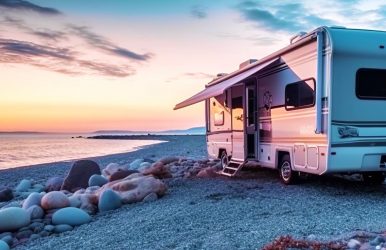Bean to Mug: The Journey of Chikmagalur’s Coffee from the Plantation to Your Cup
BY Sibashree Mar 22, 2025
Are you aware of Chikmagalur's Coffee? The taste is counted among the richest coffees in the world. You may have tasted the coffee from here. But did you care to visit the most prestigious coffee estate in the country yet? You’ll be amazed by the hills covered by mist. As you graze past, you will see the lush green plantations. The contrasts of the green top against the grey rocks will surely amaze you. But the best part is something else. You will come across the rich coffee aroma. It’s always present in the air. The bottom line is that this characteristic coffee station is a must-visit. There’s a reason why it is called the Distinct Coffee Land of Karnataka. The Rich Heritage You Can't-Miss The coffee culture started under the British Raj. Now it has flourished beyond leaps. But things were different from the start. The coffee culture was prevalent among the Britishers and a small section of the Indian elites only. But that has spread now. Subsequently, Chikmagalur's Coffee is now reputed as one of the finest Indian coffee. Meanwhile, the estate has also risen to the helm of fame. When you visit her, you will encounter one of the biggest and finest coffee estates in the country. Planning a Chikmagalur Tour Plan your Chikmagalur tour today. Begin with a coffee plantation tour. When you come here,, you will meet a plethora of global and domestic tourists who flock here every year. Firstly, you will enjoy the breathtaking scenery around. Next, you will soak yourself in the rich coffee aroma in the surroundings. From coffee beans to the brewery, you will witness every step with your eyes. At the same time, you will get insights that you make you a coffee pro. So, make your visit to Chikmagalur’s coffee plantations more memorable and insightful! The History of Chikmagalur Coffee Coffee dates back to the 17th century India. Baba Budan, who also goes by the name of Hazarat Shah Janab Allah Magatabi, paid a Haj visit. He was mesmerized by the strong beverage he had in Yemen. And the stark aroma with a rich taste took a toll on his tastebuds. Then he decided to take coffee back to his land. That’s how coffee occurred in India. undertook a pilgrimage to the holy land of Mecca. During his travels, he encountered the rich, aromatic coffee of Yemen and was so impressed by its refreshing qualities that he decided to bring it back to India. The Challenge Back then, exporting coffee from the Arabian estates was not allowed. But the legend says that he smuggled around 7 beans. He just hid them in his robes. When he returned in 1670, he paid a visit to the Chikmagalur's Coffee Hills. At first, he didn’t know it would be a coffee plantation paradise. But the rich soil and the soothing weather worked like magic. Later the surrounding Sufi hills were named Baba Budan Giri, honoring him. How Did It Spread? Initial coffee’s acceptance was slow. Hence the cultivation was limited too. But coffees started to spread like wildfire when the English came here. The Europeans were mesmerized. At first, The Dutch made spreading coffee plantations a personal agenda in India. But the real reign of coffee started under the British. Around 1850, coffee plantations became normal in India. What’s The Status Now? The Chikmagalur's Coffee is now popular across India and abroad too. However there is a sheer economic importance of this beverage as well. At first, the story began with just 7 coffee beans. But it has now grown into a fully fledged industry. Today, the coffee plantation is a separate tourist attraction. If you ever go by the scenic Chikmagalur's Coffee estate, check out the coffee plantations with awe! The Art of Coffee-Making Chikmagalur’s coffee plantations are home to two distinct varieties of coffee: Arabica and Robusta. Arabica is known for its delicate flavor and sweet undertones and is in high demand in international markets. Arabica plants are smaller and thrive at higher altitudes. They require more manual attention and meticulous care. On the other hand, Robusta is more resilient, growing at lower elevations and having a bold, strong taste. Robusta plants are also easier to maintain. While a casual coffee drinker may be unable to distinguish between the two easily, estate owners carefully select their preferred variety based on climate conditions, maintenance needs, and market demand. Both coffee varieties play a crucial role in Chikmagalur’s coffee industry. The journey from coffee cherry to mug is an intricate, labor-intensive process. The steps of coffee-making are as follows: Step 1: Harvesting Skilled coffee pickers handpick only the ripest coffee cherries, ensuring quality and consistency. Step 2: Processing The harvested cherries undergo various processing methods to remove the outer layers and prepare the beans. Step 3: Drying In this stage, the main aim is to dry the coffee. You can use the sun drying method. Most roasteries use it too. Once there is no moisture in the beans, you can go to the next stage. Step 4: Roasting Once done, the coffee beans go through the penultimate stage. Each bean goes through careful roasting. But you need to maintain a precise temperature during the process. It helps to infuse the rich gourmet smell and characteristic taste. This careful process, perfected over generations, is what makes Chikmagalur’s coffee so exceptional. Explore the Coffee Museum For those eager to explore the world of coffee, a visit to the Coffee Museum, also known as the Coffee Yatra Museum in Chikmagalur, is a must. The Coffee Board of India started this museum as a solo initiative. Now this is the main Indian coffee museum that educates visitors about coffee. You can learn about coffee’s journey from scratch here. Located in Dasarahalli, just a short drive from Chikmagalur’s city center, the museum offers an enriching experience that is ideal for both casual coffee lovers and connoisseurs. Pay A Visit Today! For a truly immersive coffee experience, a stay amid Chikmagalur’s Coffee plantations is ideal. Gateway Chikmagalur provides the perfect luxury stay, offering modern comforts while keeping visitors close to the town’s coffee heritage. With its proximity to key attractions like the Coffee Museum, it serves as a great base to explore the region’s rich coffee culture, while indulging in a luxurious, nature-infused getaway.













